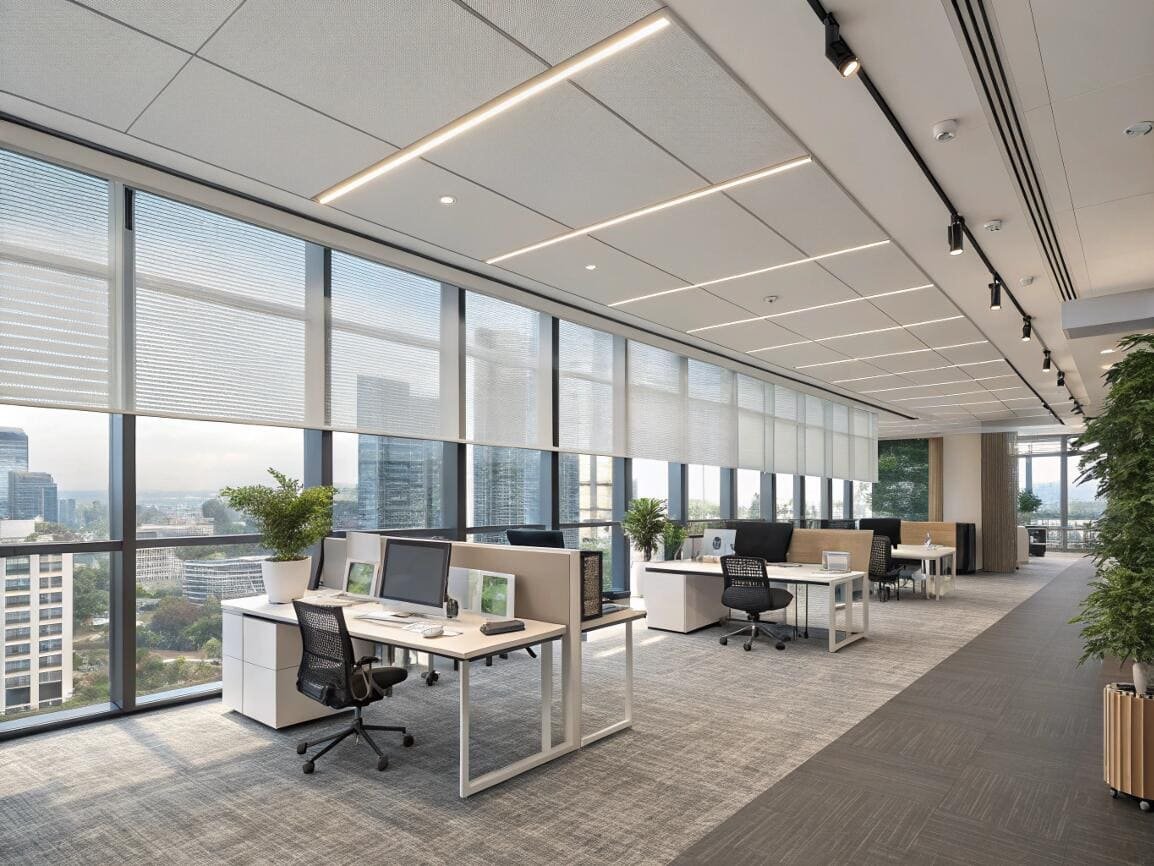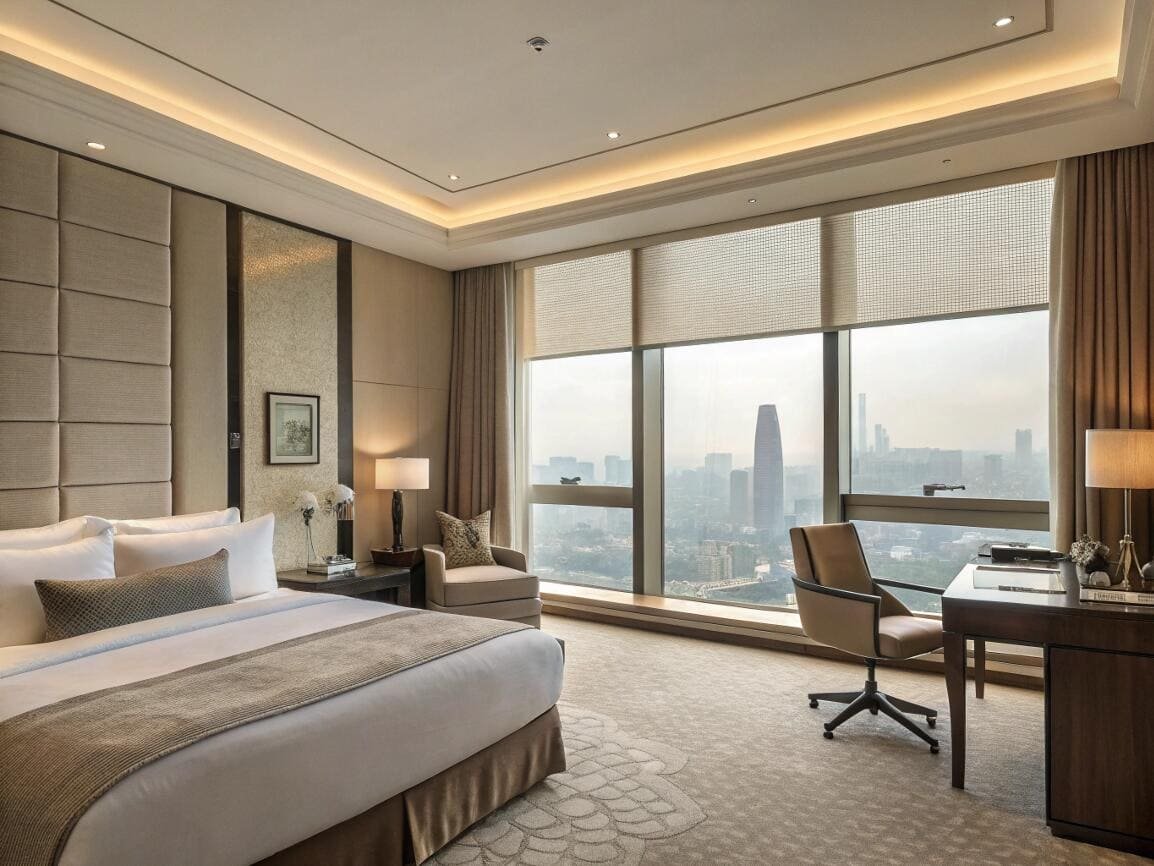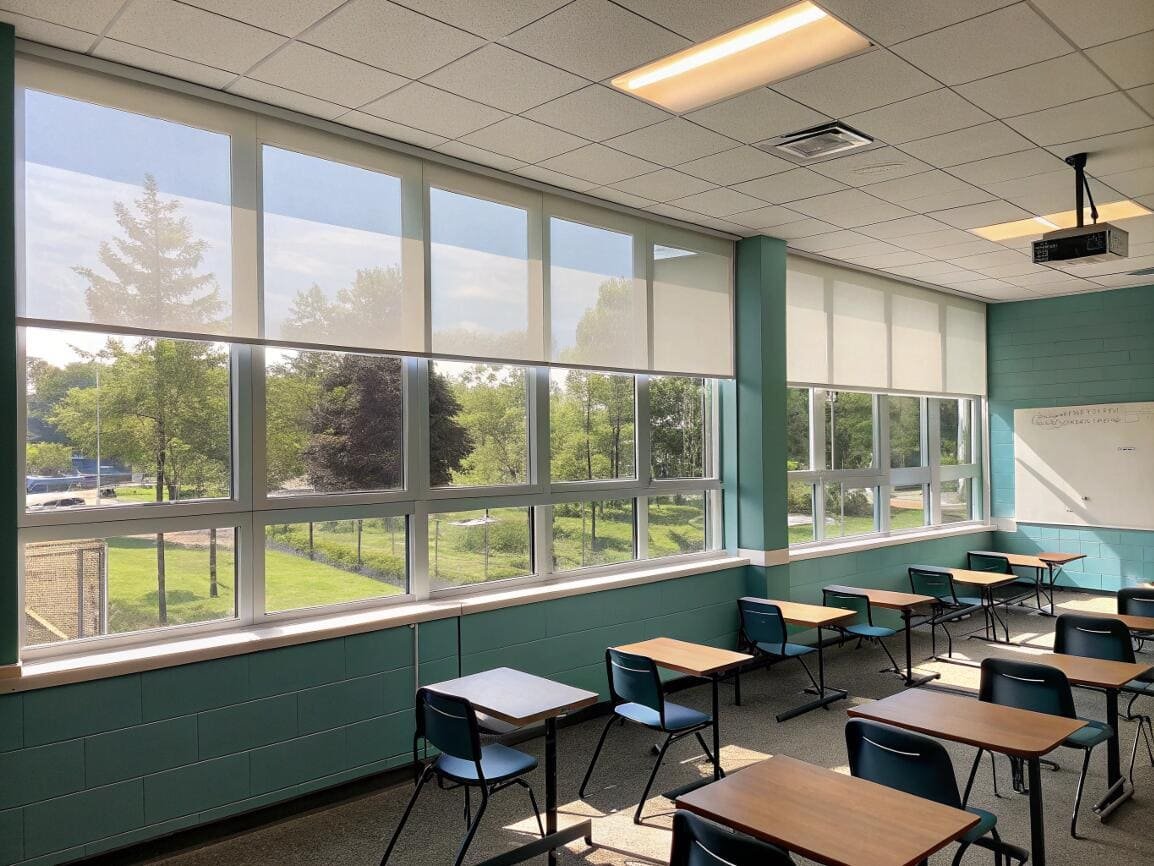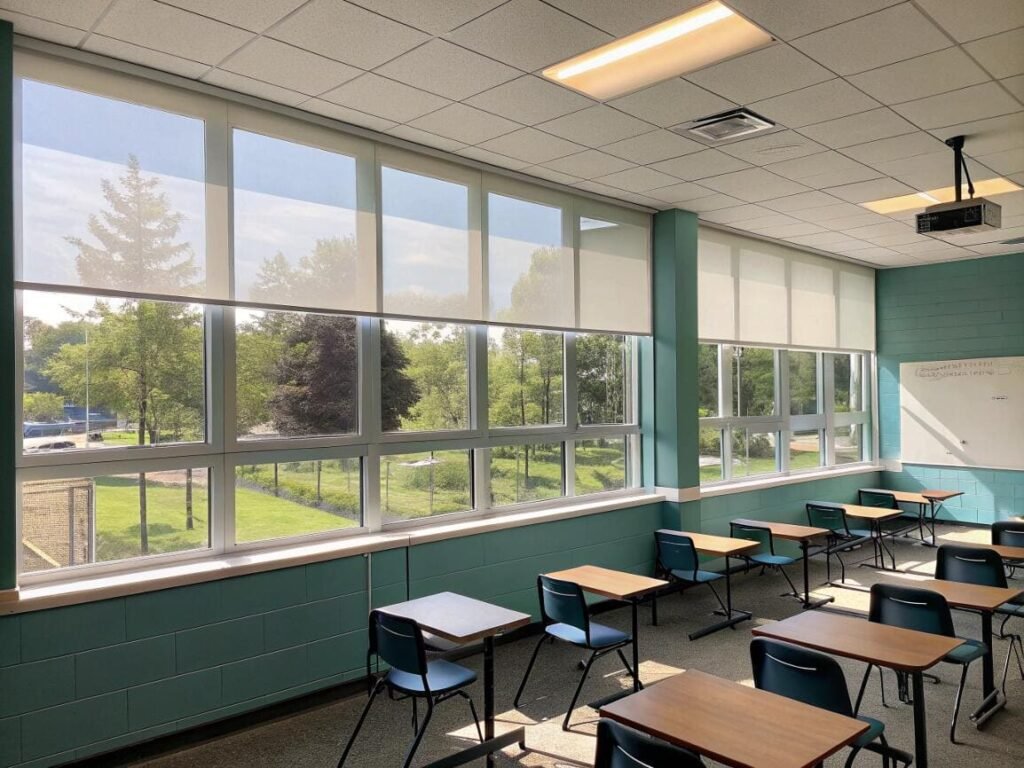You see roller blinds[^1] in almost every commercial and residential project, but do you actually know what's going on inside that simple-looking tube? Choosing the wrong mechanism can lead to user frustration, maintenance calls, and even safety compliance[^2] issues. You need to understand the mechanics to specify with confidence.
The secret to a roller blind's function is its internal mechanism[^3], which always follows a four-part logic: the control operates a clutch or spring inside a roller tube, which then raises or lowers the fabric. Understanding this simple but powerful principle is the key to selecting the right system for any project.

As a solutions provider for project buyers like Emma, my job is to demystify this. She needs to deliver solutions that are reliable, safe, and fit her design vision perfectly. The "engine" inside that blind is what makes all the difference. Let's roll up our sleeves and take a closer look at how these mechanisms really work.
What Is a Roller Blind Mechanism?
You hear suppliers talk about "clutch systems[^4]," "springs," and "motors," but it's not always clear how they differ. This confusion makes it difficult to compare products or explain the value of a more advanced system to your client.
A roller blind mechanism is the internal control system that dictates how the blind moves. It’s the engine that sits inside the roller tube and translates a user's action—like pulling a chain or pressing a button—into the smooth, controlled movement of the fabric shade up or down.

I always tell my clients to think of the mechanism as the heart of the blind. While the fabric provides the look and the light control, the mechanism defines the user experience[^5], reliability, and safety of the entire system. At its core, every mechanism is a transmission system. It takes the input from a control (like a chain, a gentle tug, or an electronic signal) and transfers that energy to the roller tube, causing it to rotate and either lift or lower the blind fabric. This foundational concept applies whether you are looking at the most basic or the most advanced automated system[^6].
What Are the Core Components of a Roller Blind?
From the outside, a roller blind looks incredibly simple. But if a problem arises, not knowing the key components makes it impossible to identify the issue, leaving you reliant on a service call for what might be a simple fix.
Every roller blind, regardless of its control type, is built from four core components: the roller tube, the fabric, the control mechanism[^7], and the mounting brackets[^8]. Understanding the role of each part is the first step to becoming an expert specifier.

Let's break them down. I often use a cutaway view like the one above to show my B2B clients exactly what they are specifying.
| Component | Function |
|---|---|
| Roller Tube | The aluminum tube that the fabric wraps around. It houses the control mechanism[^7]. |
| Control Mechanism | The "engine" of the blind. This can be a spring, a clutch system, or an electric motor. |
| Fabric | The shade material itself, which provides the light control, color, and texture. |
| Brackets & End Caps | The hardware that mounts the blind to the wall or window frame. |
| Bottom Bar | A weight bar at the bottom of the fabric to ensure it hangs straight and retracts smoothly. |
Knowing these parts helps you communicate more effectively with suppliers and installers. For example, if a blind is not operating smoothly, you can identify if the issue might be with the mechanism inside the tube or the way the brackets have been installed.
How Do the Different Mechanism Types Operate?
You know the basic components, but now you have to choose a control type. Should you go with a standard chain, a clean cordless design[^9], or a fully automated motorized system[^10]? The choice feels overwhelming.
There are three main mechanism types, and each operates differently to offer a unique balance of cost, convenience, and safety. The options are a chain-operated clutch, a spring-loaded cordless system, or an electric motor.

Let's look at how each "engine" works.
- Chain-Operated (Clutch System): This is the classic, cost-effective option. A continuous loop chain is connected to a clutch mechanism inside the roller tube. When you pull the chain, the clutch engages gears that rotate the tube, lifting or lowering the shade. While economical, these systems require a chain tensioner to be installed to meet most commercial safety standards.
- Cordless (Spring-Loaded System): This type offers a cleaner look and enhanced safety. Inside the tube is a coiled spring motor. When you pull the shade down, the spring builds tension. A gentle push up releases a lock, and the stored energy in the spring smoothly retracts the shade.
- Motorized System: This is the premium solution for convenience and performance. A tubular motor is placed directly inside the roller tube. It is controlled via a remote, wall switch, or a smart-home app. This is the best choice for hard-to-reach windows, large spaces, or projects focused on energy savings[^11] and smart integration.
How Do I Select the Right Mechanism for My Project?
You understand the options, but now you have to apply that knowledge to a real-world project. Specifying for a single residential window is one thing, but choosing the right system for a 10-story office building is a decision with major budget and performance implications.
You should select the mechanism based on four key factors: window size, fabric weight[^12], safety requirements, and automation goals. Forget a one-size-fits-all approach. The best strategy is to match the mechanism to the specific functional needs of each space.

Here is the decision framework I use with my project partners:
- For large or high windows (>3m tall): Always specify a motorized system. Manually operating very large or heavy blinds is impractical and can lead to wear and tear. Motorization reduces human risk and ensures smooth, reliable operation.
- For safety-critical environments (Hotels, Schools, Healthcare): Your primary choices should be cordless or motorized. Both eliminate the potential hazards of looped cords, ensuring you comply with commercial safety regulations. If you must use a chain system for budget reasons, a tensioner is not optional—it's mandatory.
- For projects focused on energy savings: Motorized is the clear winner. When integrated with a smart building system, automated shades can respond to light and temperature cues, delivering potential energy savings of 10-30%.
- For standard windows in a budget-driven project: A high-quality chain-operated system with proper safety tensioners is a reliable and economical choice.
What Do I Need for Installation and Maintenance?
The blinds have been delivered to the site, and you're coordinating the installation. You need to ensure the process is efficient and that the end-user knows how to care for the product to guarantee long-term performance.
A successful outcome depends on a good installation and simple, consistent maintenance. The key to installation is accurate measurement and secure mounting. Maintenance is about gentle cleaning and periodic functional checks.

Here is a quick checklist I provide to contractors and facility managers to ensure everything goes smoothly.
Installation Checklist
- Confirm Measurements: Double-check that the blind size matches the window opening for the intended mount type (inside or outside).
- Secure the Brackets: Ensure brackets are installed level and securely fastened into a solid surface. This is the foundation of the entire system.
- Install the Blind: Carefully click the blind cassette or tube into the brackets. Make sure it is seated firmly.
- Test Operation: Operate the blind fully up and down several times to ensure it moves smoothly and hangs straight. For chain blinds, confirm the tensioner is installed correctly.
Long-Term Maintenance Checklist
- Regular Dusting: Use a feather duster or the brush attachment of a vacuum to gently clean the fabric.
- Check the Mechanism: Once a month, operate the blind to ensure the mechanism is still smooth. For motorized blinds, check battery levels if they are not hardwired.
- Test Safety Features: For chain blinds, periodically check that the safety tensioner is still secure to the wall.
How Do I Get Trade Pricing and Samples?
You’re clear on the technical requirements and have identified the right mechanism for your project. Now you need to get physical materials for client sign-off and concrete numbers for your budget before you can issue a purchase order.
The final step is to turn your specification into an order. To do this, you need to get physical fabric samples[^13] into your hands and a detailed, project-specific quote[^14] that reflects trade pricing[^15]. This removes all guesswork and allows you to move forward quickly.

I have built my business around making this process as fast and transparent as possible for project buyers. Here is what you should do next:
- Request a Sample Pack. You need to see and feel the fabric options in person to make the final call on color and texture.
- Download the Product Manual. Get immediate access to all the technical specifications, size limitations, and installation guides you need for your project documentation.
- Submit Your Project for a Quote. Send us your window schedule and preliminary selections. We are committed to providing you with a comprehensive trade quote so you can firm up your budget.
These three steps are designed to give you everything you need to finalize your specification and secure your order. In this business, speed and accuracy are everything, and my goal is to be a partner that helps you win projects and scale faster.
Conclusion
The mechanism inside a roller blind is a simple, elegant piece of engineering. By understanding the core options—chain, cordless, and motorized—and matching them to your project's specific needs for size, safety, and automation, you can ensure a successful outcome every time.
---
[^1]: Explore the mechanics of roller blinds to understand their functionality and benefits for your projects.
[^2]: Ensure your projects meet safety compliance standards by understanding roller blind regulations.
[^3]: Learn about the internal mechanism that drives roller blinds for better specification and installation.
[^4]: Understand clutch systems to make informed decisions when selecting roller blinds for your projects.
[^5]: Explore how different mechanisms influence the user experience and satisfaction with roller blinds.
[^6]: Discover the features of automated systems that enhance convenience and functionality in roller blinds.
[^7]: Discover how control mechanisms affect the performance and user experience of roller blinds.
[^8]: Learn the best practices for installing mounting brackets to ensure a secure and functional roller blind.
[^9]: Explore the benefits of cordless designs for improved safety and modern aesthetics in roller blinds.
[^10]: Explore the advantages of motorized systems for convenience and energy efficiency in roller blinds.
[^11]: Learn how roller blinds can enhance energy efficiency in your projects and reduce costs.
[^12]: Understand how fabric weight impacts the functionality and aesthetics of roller blinds.
[^13]: Learn the process for requesting fabric samples to make informed design choices for roller blinds.
[^14]: Understand the importance of a project-specific quote to accurately budget for roller blinds.
[^15]: Find out how to access trade pricing for roller blinds to optimize your project budget.Partner with VelaBlinds for Your Next Project
Smart window treatments shouldn't be complicated. After working with 500+ distributors and contractors worldwide, I've streamlined the process to get you quality products, competitive pricing, and reliable support - every time.
Why project professionals choose VelaBlinds:
- ✅ Fast, Accurate Quotes - Detailed specs and pricing within 24 hours
- ✅ Transparent Pricing - No hidden fees, volume discounts clearly outlined
- ✅ Quality Assurance - Direct partnerships with certified OEM manufacturers
- ✅ Project Support - Dedicated account manager from quote to delivery
Start your next project:
📧 Quick Quote: Send your requirements to info@velablinds.com
📱 Direct Contact: WhatsApp +86 137 2012 8317
🌐 Browse Solutions: https://velablinds.com/
📁 Product Resources: Access spec sheets, catalogs & project files
Paul Chen, Founder
"I built VelaBlinds to solve the real challenges I faced as a project buyer - long lead times, unclear specs, and unreliable suppliers. Let's discuss how we can power your projects with smarter blinds."
Serving distributors and contractors across North America, Europe, and Australia since 2018.




